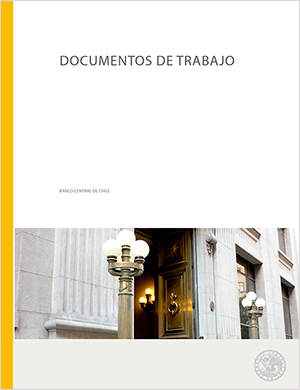Working Papers N°868: A TNT DSGE Model for Chile: Explaining the ERPT
Publications
Working Papers N°868: A TNT DSGE Model for Chile: Explaining the ERPT
Autor: Mariana García-Schmidt , Javier Garcia-Cicco
Description
We present a fully-edged dynamic stochastic general equilibrium (DSGE) model for the Chilean economy to explain the economy's adjustments to external shocks, explicitly separating between tradable and non-tradable sectors (TNT). The model was built to explain Chile's linkages with the external sector, to recognize that the sectors of the economy have particular price dynamics that are affected differently by shocks that move thenominal exchange rate, and to study different measures of exchange rate pass through (ERPT). We show unconditional and conditional ERPT measures. The former measures are comparable with the empirical literature, while the latter are defined after a particular shock hit the economy. We highlight important differences in their magnitudes and in their effect on different prices. While a shock to international prices has a transitory and low ERPT, one that affects the uncovered interest rate parity condition has a very high and persistent ERPT for all price indexes. In addition, the prices that are more rapidly affected are those of tradable sectors, while non-tradable prices are affected with a lag, but for longer. We use the model to show that the conditional ERPT measures could have helped to anticipate a great part of the inflationary effects of the depreciation following the tapering announcements of the US in 2013-2015, which was not possible using unconditional ERPT measures of the empirical literature.
Working Papers N°868: A TNT DSGE Model for Chile: Explaining the ERPT
Boxes and graphics

